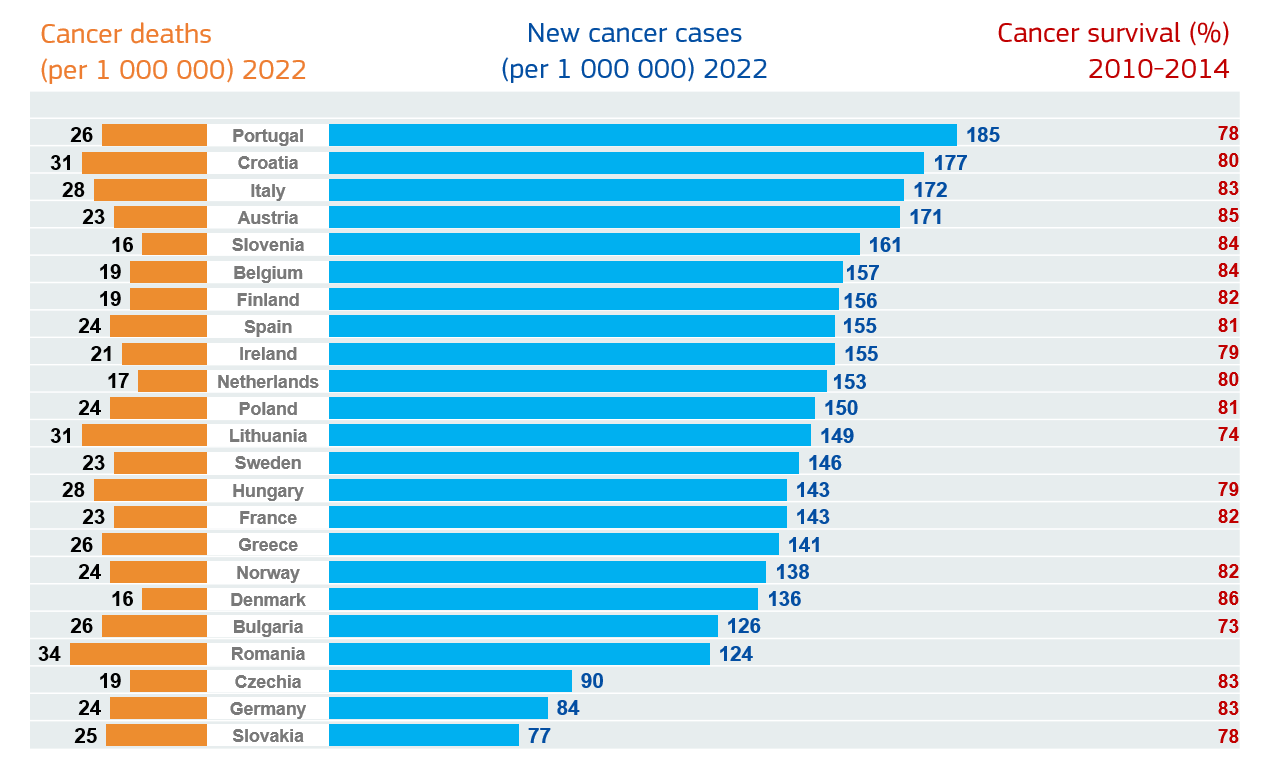Cancer is the most common cause of death due to disease in children and adolescents. It is estimated that 14 thousand children and adolescents (0-14 years old) were diagnosed with cancer in Europe in 2022, and 2 thousand a year die from cancer. Over 81% of those affected survive the disease, but are left to deal with its physical and psychosocial consequences throughout their lives. The most prevalent cancers in children and adolescents are leukemia, lymphomas and brain cancers. The causes of the most prevalent cancers in children and adolescents are not entirely understood. Geographical inequalities in childhood cancers exist in Europe. For instance, cancer burden varies substantially across countries and differences can even be observed within countries at regional levels.
Cancer burden in Europe

Disparities are also observed in availability of anticancer medicines, where in some countries more than 90% of essential medicines are always available, versus less than 50% in others. Similarly access to clinical trials for children and adolescents substantially varies, with lower accessibility in some Eastern European countries.
The origins of these inequalities may be associated with country disparities in provision of early cancer detection correct diagnosis, and quality of cancer treatment and care. More detailed, timely, harmonised, comprehensive and comparable data collected regularly and across the EU, including the potential impact of socioeconomic status, are needed to better pinpoint and address inequalities in childhood cancers.
To learn more check out the new factsheet on childhood cancers (pdf) and the Childhood Cancer Country Profiles form the OCEAN (Organisation of Care & rEsearch for children with cANcer in Europe) Project.
Explore the childhood cancer indicators in the data tool
Essential medicines for childhood cancers
The indicator presents the percentage of medicines used in paediatric cancer patients aged 0 to 18 years available in each country, out of the 68 medicines identified as essential in the study from Vassal et al., 2021.
Oncology clinical trials for children
The indicator presents the percentage of available oncology trials open to participation to children and adolescents under the age of 18 in each EU country.
